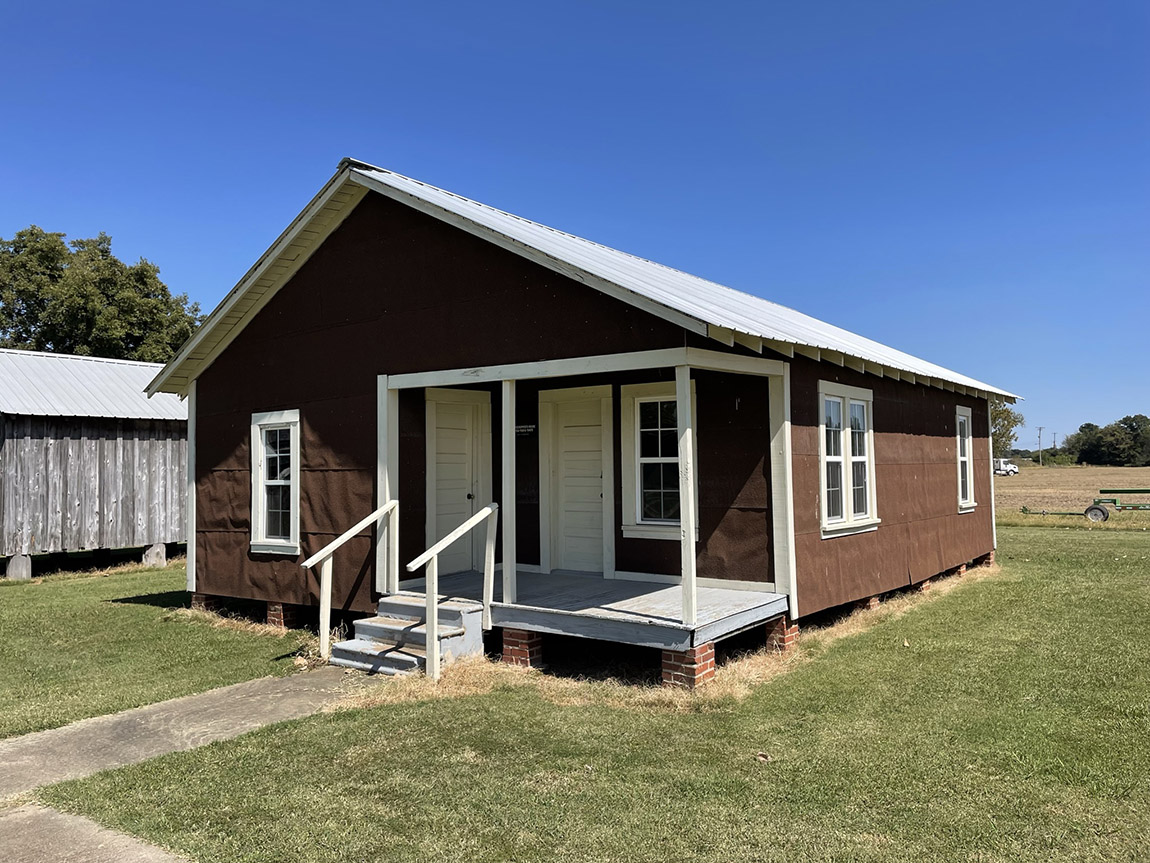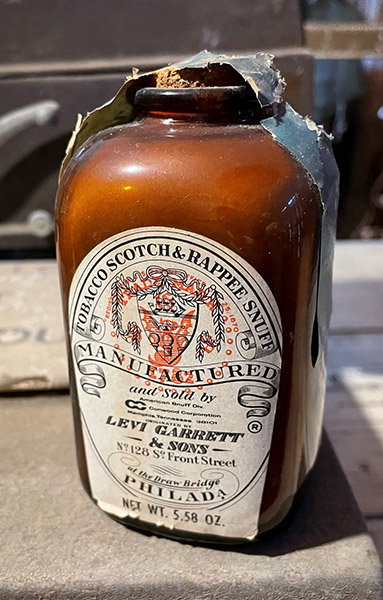
Matthew P. Rooney, Research Station Archeologist, UAM Research Station
Feature of the Month - February 2023

Valley Tenant House #1 (site 3DR476) was once the location of an African American tenant farmer house on the Drew County side of the Valley Plantation in southeast Arkansas. Subsurface excavations were conducted at the former location of the house in May of 2022 and served as the first major investigation of an exclusively postbellum site on the plantation. The ongoing investigations are part of a larger Valley Plantation project intended to better understand Black lifeways on the plantation as well as to engage with the local African American community and their history. Artifact analysis and documentary research suggests that the house was constructed about 1895 and abandoned sometime during the 1940s.
Eleven 1x1 m test units were dug at the location, all to 25 cm below the surface (cmbs). The historic “floor” of the site was observed between 20 and 25 cmbs, and a snuff bottle cache feature (Figure 1) was observed on the surface of this floor in test unit 3. This cache consisted of five snuff bottles—two whole and three crushed in situ. Excavators carefully removed soil from around the cache and kept it in situ so that each individual bottle—fragmented or whole—could be photographed and then collected as separate specimens.
The snuff bottle cache was recovered to the east of a soil change observed on the historic floor that was interpreted as the edge of the structure (Figure 2). Therefore, this snuff bottle cache was recovered beneath the house, which would have rested several inches above the ground surface on brick piers facing Bayou Bartholomew. Surviving sharecropper houses observed in the region feature a porch that encompasses this rear portion of the house (Figure 3), so it is possible that those who were using the snuff were doing so while enjoying their back porch and discarding their waste beneath the place where they were sitting.

In addition to the five snuff bottles making up this cache, an additional two whole bottles were recovered from the surface when the site was first documented, and 86 glass fragments were identified by glass analyst Katy Gregory as snuff bottle glass. Taking the weight of the entire glass assemblage together, snuff bottles and fragments made up approximately 40 percent of the overall weight, making this artifact type one of the most ubiquitous recovered from the Valley Tenant House #1 site.

The form of the snuff bottle artifacts making up the tenant house assemblage is consistent with snuff containers produced by the American Snuff Company in Memphis, Tennessee, which became the headquarters for the company in 1912. Labels on identical bottles observed at the nearby Desha County Historical Museum read “Tobacco Scotch & Rappee Snuff,” with a net weight of 5.58 ounces (Figure 4). Historically, snuff was a smokeless tobacco powder that was ingested through the nose, but it became popular in the United States to “dip” a small stick or twig in the powder and then place it in inside the cheek—an oral ingestion technique that led to the modern use of dipping tobacco (moist snuff).
Extensive excavations were previously conducted by both Skip Stewart-Abernathy (1991–1992) and Jodi Barnes (2014–2016) at the Valley plantation big house, known as the Taylor House (3DR26), where the white enslaver family and later white farm managers and lodgers lived. The Taylor House excavations yielded one whole snuff bottle, and a further 13 snuff bottle fragments, making up 3.5 percent of the overall weight of the glass assemblage. This shows that at least one Black tenant household living on the plantation consumed far more snuff than a contemporaneous white household.
One of the informants whom Skip Stewart-Abernathy interviewed when he was conducting fieldwork in 1991 was Ruth Peacock, a school teacher lodging in the Taylor House in the 1930s. Mrs. Peacock lived to be 108, and she told Skip a story about a Black woman who lived on the plantation who needed her snuff so badly that she would cross Bayou Bartholomew even during heavy storm events to get to the nearby town of Winchester to resupply. In 2022, a new informant named Merle Bryant, an African American woman who was born and raised at Valley between 1938 and 1960, confirmed that snuff use was very popular among the Black ladies living on the plantation, making these bottle artifacts not only items found in a larger quantity at the Black tenant farmer house but also a potential manifestation of gendered activity.
Feature of the Month Series
Archeological features are elements or structures that are nonportable or cannot be easily removed from a site (such as a wall or a post hole). Archeologists document archeological features extensively in the field to record what will otherwise be destroyed in the process of excavation. The records of these features are often all that is left at the end of an excavation. Excellent record keeping is necessary for these features to provide insight into the archeological record and site formation.
In this series, we present interesting and important archeological features that have helped archeologists to better or more fully understand the sites on which they were working. New features will be added monthly. Find the list of features here.
